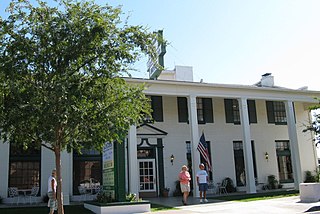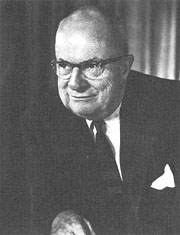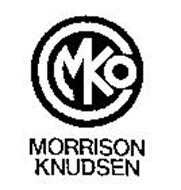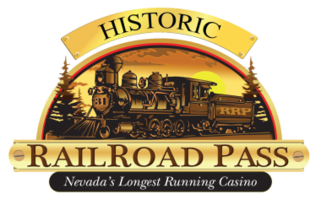Related Research Articles

Hoover Dam is a concrete arch-gravity dam in the Black Canyon of the Colorado River, on the border between the U.S. states of Nevada and Arizona. It was constructed between 1931 and 1936 during the Great Depression and was dedicated on September 30, 1935, by President Franklin D. Roosevelt. Its construction was the result of a massive effort involving thousands of workers, and cost over one hundred lives. Originally known as Boulder Dam from 1933, it was officially renamed Hoover Dam for President Herbert Hoover by a joint resolution of Congress in 1947.

Boulder City is a town in Clark County, Nevada, United States. It is approximately 26 miles (42 km) southeast of Las Vegas. As of the 2010 census, the population of Boulder City was 15,023. The town took its name from Boulder Canyon. Boulder City is one of only two places in Nevada that prohibits gambling, the other being the town of Panaca.

The Colorado River is one of the principal rivers in the Southwestern United States and northern Mexico. The 1,450-mile-long (2,330 km) river drains an expansive, arid watershed that encompasses parts of seven U.S. states and two Mexican states. Starting in the central Rocky Mountains of Colorado, the river flows generally southwest across the Colorado Plateau and through the Grand Canyon before reaching Lake Mead on the Arizona–Nevada border, where it turns south toward the international border. After entering Mexico, the Colorado approaches the mostly dry Colorado River Delta at the tip of the Gulf of California between Baja California and Sonora.

Bechtel Corporation is an American engineering, procurement, construction, and project management company founded in San Francisco, California, and headquartered in Reston, Virginia. It is the largest construction company in the United States.

Warren Abraham Bechtel was the founder of the Bechtel Corporation, the largest construction company in the United States as of 2017.

Promontory is an area of high ground in Box Elder County, Utah, United States, 32 mi (51 km) west of Brigham City and 66 mi (106 km) northwest of Salt Lake City. Rising to an elevation of 4,902 feet (1,494 m) above sea level, it lies to the north of the Promontory Mountains and the Great Salt Lake. It is notable as the location of Promontory Summit, where the First Transcontinental Railroad from Sacramento to Omaha in the United States was officially completed on May 10, 1869. The location is sometimes confused with Promontory Point, a location further south along the southern tip of the Promontory Mountains. Both locations are significant to the Overland Route, Promontory Summit is where the original, abandoned alignment crossed the Promontory Mountains while the modern alignment, called the Lucin Cutoff, crosses the mountains at Promontory Point.

The Davenport Locomotive Works, of Davenport, Iowa, USA was formed as the W W Whitehead Company in 1901. In 1902 the company commenced building light locomotives. The Company was renamed the Davenport Locomotive Works in 1904.

Henry John Kaiser was an American industrialist who became known as the father of modern American shipbuilding. Prior to World War II, Kaiser was involved in the construction industry; his company was one of the companies that built Hoover Dam. He established the Kaiser Shipyards, which built Liberty ships during World War II, after which he formed Kaiser Aluminum and Kaiser Steel. Kaiser organized Kaiser Permanente health care for his workers and their families. He led Kaiser-Frazer followed by Kaiser Motors, automobile companies known for the safety of their designs. Kaiser was involved in large construction projects such as civic centers and dams, and invested in real estate, later moving into television broadcasting. With his wealth, he established the Kaiser Family Foundation, a nonprofit, non-partisan, charitable organization.

The Mike O'Callaghan–Pat Tillman Memorial Bridge is an arch bridge in the United States that spans the Colorado River between the states of Arizona and Nevada. The bridge is located within the Lake Mead National Recreation Area approximately 30 miles (48 km) southeast of Las Vegas, and carries Interstate 11 and U.S. Route 93 over the Colorado River. Opened in 2010, it was the key component of the Hoover Dam Bypass project, which rerouted US 93 from its previous routing along the top of Hoover Dam and removed several hairpin turns and blind curves from the route. It is jointly named for Mike O'Callaghan, Governor of Nevada from 1971–1979, and Pat Tillman, an American football player who left his career with the Arizona Cardinals to enlist in the United States Army and was killed in Afghanistan in 2004 by friendly fire.

Francis Trenholm Crowe was a civil engineer and employee of Morrison-Knudsen, who later became in 1931, the General Construction Superintendent of the Boulder Dam construction contract.
The settlement of Las Vegas, Nevada was founded in 1905 after the opening of a railroad that linked Los Angeles and Salt Lake City. The stopover attracted some farmers to the area, and fresh water was piped in to the settlement. In 1911, the town was incorporated as part of the newly founded Clark County. Urbanization took off in 1931 when work started on the Boulder Dam, bringing a huge influx of young male workers, for whom theaters and casinos were built, largely by the Mafia. Electricity from the dam also enabled the building of many new hotels along the Strip. The arrival of Howard Hughes in 1966 did much to offset mob influence and helped turn Las Vegas into more of a family tourist center, now classified as a Mega resort.

The Nevada Southern Railroad Museum is a railroad museum in Boulder City, Nevada operated by the Nevada State Railroad Museum which is an agency of the Nevada Department of Tourism and Cultural Affairs. The railway is operated by the Nevada State Railroad Museum and is located on the tracks that were installed to support construction activities at the Hoover Dam. The state obtained the tracks and right of way from the Union Pacific Railroad in 1985.
The Utah Construction Company was a construction company founded by Edmund Orson Wattis Jr., Warren L. Wattis and William. H. Wattis in 1900.
Washington Group International was an American corporation which provided integrated engineering, construction, and management services to businesses and governments around the world. Based in Boise, Idaho, WGI had approximately 25,000 employees working in over 40 US states and more than 30 countries. Its primary areas of expertise were: infrastructure, mining, industrial/process, energy & environment, and power. It was acquired by URS Corporation of San Francisco in November 2007 for $3.1 billion, subsequently purchased by AECOM.

Edmund Orson Wattis, Junior, was oldest of the brothers who founded Wattis Brothers and the Utah Construction Company.
William Henry Wattis, also known as W. H. Wattis, was one of the three Wattis Brothers who founded Utah Construction Company in 1900.

Morrison–Knudsen (MK) was an American civil engineering and construction company, with headquarters in Boise, Idaho.

The Joshua Hendy Iron Works was an American engineering company that existed from the 1850s to the late 1940s. It was at one time a world leader in mining technology and its equipment was used in the construction of the Panama Canal, amongst other major projects. The company went on to serve many different markets during the course of its existence, but is perhaps best remembered today for its contribution to the American shipbuilding industry during World War II.

Boulder City Historic District, is Nevada's largest listing on the National Register of Historic Places with 408 buildings.

Railroad Pass Hotel & Casino, named after nearby Railroad Pass, is a hotel and casino located in Henderson, Nevada.
References
- ↑ Herman, Arthur (2012). Freedom's Forge: How American Business Produced Victory in World War II. New York: Random House. pp. 37, 52–5, 210. ISBN 978-1-4000-6964-4.
- ↑ 1634 to 1699: Harris, P. (1996). "Inflation and Deflation in Early America, 1634–1860: Patterns of Change in the British American Economy". Social Science History . 20 (4): 469–505. JSTOR 1171338. 1700-1799: McCusker, J. J. (1992). How much is that in real money?: a historical price index for use as a deflator of money values in the economy of the United States (PDF). American Antiquarian Society. 1800–present: Federal Reserve Bank of Minneapolis. "Consumer Price Index (estimate) 1800–" . Retrieved January 1, 2020.
- 1 2 3 Thomas, Ryland; Williamson, Samuel H. (2020). "What Was the U.S. GDP Then?". MeasuringWorth. Retrieved September 22, 2020. United States Gross Domestic Product deflator figures follow the Measuring Worth series.
- ↑ Stevens, Joseph (1988). Hoover Dam: An American Adventure. New York: Free Press. p. 34. ISBN 0-8061-2283-8.
- ↑ Stevens (1988) , pp. 35–42.
- ↑ Stevens (1988) , pp. 45–46.
- ↑ Rogers, J. David (September 22, 2005). "Hoover Dam: Grout Curtain Failure and Lessons Learned in Site Characterization" (PDF). Dams Symposium. Las Vegas: Association of Engineering Geologists. Retrieved June 14, 2010.
- ↑ "Engine #754 at Joshua Hendy Iron Works". Sunnyvale History. Sunnyvale Collection. Sunnyvale, CA: Sunnyvale Public Library. Retrieved August 19, 2017.
- ↑ "Corporations: Machine Maker for the West". Time . March 25, 1946. Archived from the original on February 19, 2011.
- ↑ Herman (2012) , pp. 169-74, 176-91.